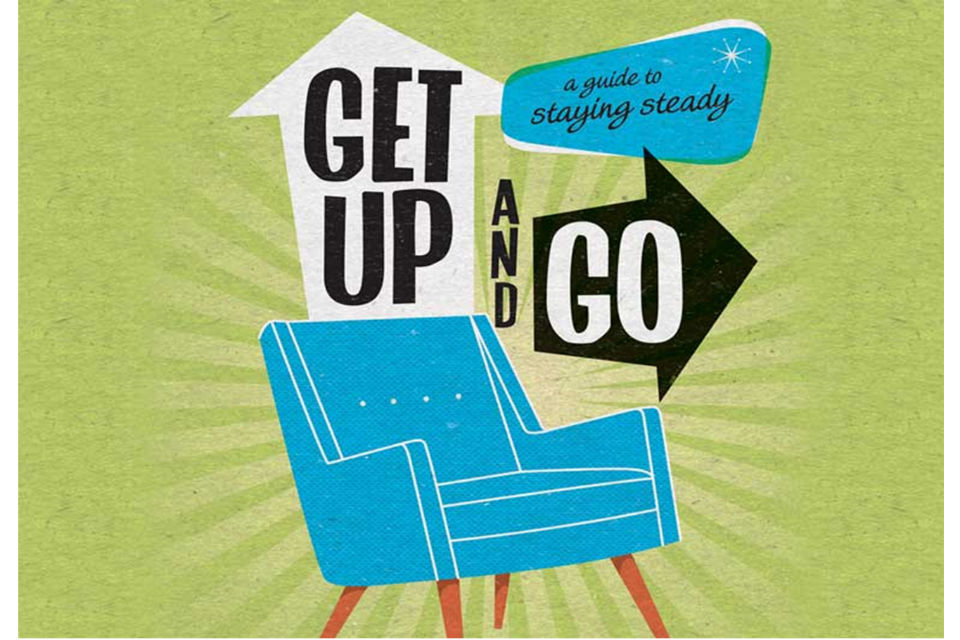A Biased View of Dementia Fall Risk
Indicators on Dementia Fall Risk You Should Know
Table of ContentsDementia Fall Risk Things To Know Before You Buy4 Easy Facts About Dementia Fall Risk ShownGet This Report on Dementia Fall RiskThe smart Trick of Dementia Fall Risk That Nobody is DiscussingWhat Does Dementia Fall Risk Do?
Analyzing fall risk assists the whole healthcare team establish a more secure environment for each person. Make certain that there is a marked location in your clinical charting system where staff can document/reference ratings and document relevant notes associated with fall prevention. The Johns Hopkins Autumn Threat Evaluation Device is one of many tools your team can use to assist prevent adverse clinical events.Person falls in healthcare facilities are usual and debilitating damaging events that continue in spite of decades of effort to lessen them. Improving interaction throughout the examining registered nurse, care group, person, and client's most involved family and friends may enhance autumn prevention efforts. A team at Brigham and Female's Hospital in Boston, Massachusetts, looked for to establish a standardized fall avoidance program that centered around enhanced communication and client and family involvement.

The innovation group stressed that effective implementation depends on individual and personnel buy-in, combination of the program into existing workflows, and integrity to program procedures. The team noted that they are facing just how to make certain continuity in program execution during periods of dilemma. During the COVID-19 pandemic, for instance, a boost in inpatient falls was related to constraints in patient involvement along with restrictions on visitation.
The Buzz on Dementia Fall Risk
These occurrences are typically taken into consideration avoidable. To carry out the treatment, companies need the following: Access to Fall TIPS sources Loss ideas training and retraining for nursing and non-nursing personnel, including new nurses Nursing workflows that allow for client and family engagement to perform the drops assessment, make certain use the prevention strategy, and carry out patient-level audits.
The results can be extremely harmful, frequently speeding up patient decline and creating longer health center stays. One study approximated stays boosted an extra 12 in-patient days after a client loss. The Autumn TIPS Program is based upon appealing people and their family/loved ones throughout 3 major procedures: evaluation, personalized preventative treatments, and auditing to guarantee that patients are participated in the three-step fall prevention procedure.
The person analysis is based upon the Morse Loss Scale, which is a confirmed fall danger evaluation tool for in-patient hospital setups. The range includes the 6 most typical reasons patients in health centers drop: the person loss background, high-risk problems (including polypharmacy), usage of IVs and other outside devices, psychological condition, stride, and wheelchair.
Each threat aspect relate to several workable evidence-based treatments. The nurse creates a strategy that integrates the treatments and shows up to the care group, patient, and family members on a laminated poster or printed aesthetic help. Registered nurses establish the strategy while consulting with the YOURURL.com person and the patient's household.
Some Ideas on Dementia Fall Risk You Should Know
The poster offers as a communication tool with various other participants of the person's treatment team. Dementia Fall Risk. The audit part of the program includes evaluating the individual's knowledge of their threat factors and avoidance plan at the unit and healthcare facility degrees. Nurse champions perform at the very least five individual interviews a month with clients and their family members to look for understanding of the fall avoidance strategy

An estimated 30% of these drops lead to injuries, which can range in intensity. Unlike other negative events that need a standard clinical feedback, autumn avoidance depends highly on the requirements of the patient. Consisting of the input of individuals who recognize the person ideal enables greater modification. This approach has actually confirmed to be extra effective than loss avoidance programs that are based largely on the manufacturing of a threat score and/or are not customizable.
Some Known Details About Dementia Fall Risk

Based upon bookkeeping outcomes, one website had 86% compliance and 2 sites had over 95% compliance. A cost-benefit evaluation of the Loss suggestions program in 8 health centers approximated that the program expense $0.88 per person to carry out and caused financial savings of $8,500 per 1000 patient-days in straight expenses associated with the prevention of 567 falls over 3 years and 8 months.
According to the development team, companies curious about carrying out the program ought to carry out a preparedness assessment and falls avoidance gaps evaluation. 8 In addition, companies should guarantee the needed infrastructure and process for application and establish an application strategy. If one exists, the organization's Fall Avoidance Task Pressure need to be associated with preparation.
Get This Report on Dementia Fall Risk
To start, organizations must make certain conclusion of training modules by registered nurses and nursing assistants - Dementia Fall Risk. Healthcare facility staff should analyze, based upon the demands of a healthcare facility, whether to use a digital health document printout or paper version of the loss avoidance plan. Executing groups ought to recruit and train registered nurse champions and develop procedures for auditing and coverage on loss data
Staff require to be associated with the process of revamping the operations to engage patients and family in the assessment and prevention plan procedure. Equipment ought to remain in area next to make sure that devices can comprehend why an autumn happened and remediate the cause. Much more specifically, registered nurses ought to have channels to offer ongoing feedback to both personnel and system management so they can change and enhance fall avoidance workflows and communicate systemic issues.